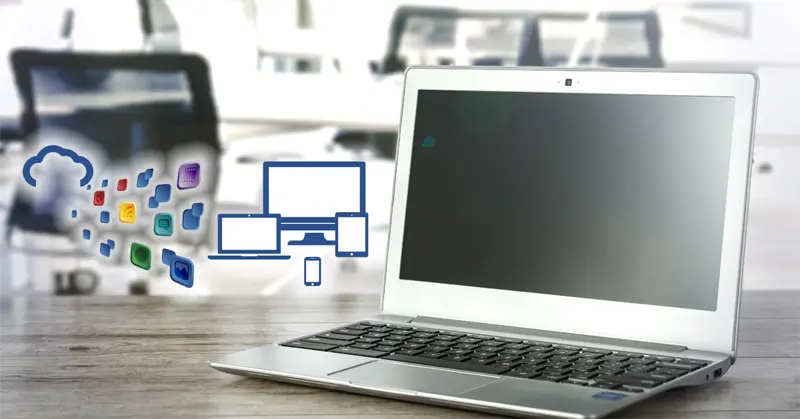Quel que soit votre point de vue, il n'y a jamais eu autant d'appareils autres que des ordinateurs de bureau qui se connectent à l'internet. Une multitude d'appareils, allant des téléphones intelligents et des tablettes à l'internet des objets (IOT), offrent aux utilisateurs de nouveaux moyens d'accéder aux réseaux. Selon Gartner, le nombre d'appareils IOT connectés à l'internet atteindra 20,4 milliards rien qu'en 2020.
Mais cela signifie-t-il que les utilisateurs délaissent leur ordinateur de bureau ou que les ordinateurs de bureau ne représentent plus qu'une petite partie d'un ensemble global en cours de transition ? Plus important encore, comment les entreprises peuvent-elles tirer parti des nouveaux appareils pour gagner en efficacité et fournir de nouveaux services sans entraver la productivité ?
La consumérisation, moteur du changement
La consumérisation de l'informatique continue d'influencer l'adoption des technologies dans l'espace commercial. Confrontées à une nouvelle génération d'employés et à des technologies grand public puissantes mais peu coûteuses, de nombreuses organisations cherchent désormais à soutenir des initiatives telles que le BYOD (Bring Your Own Device).
D'autres voient une opportunité de réduire leurs coûts de bureau en déployant des alternatives moins coûteuses comme les clients Raspberry Pi ou les tablettes. Selon McKinsey and Company, le coût total moyen de la mise en œuvre et du support des ordinateurs de bureau peut absorber jusqu'à 40% du budget informatique d'une organisation. La réduction des coûts de gestion de ces postes de travail peut se traduire par des économies considérables.
Le résultat final est cependant le même. Le monde n'est plus seulement celui des ordinateurs de bureau Windows. L'évolution des modes et des structures de travail oblige les services informatiques à s'adapter. Une chose est sûre, l'essor de la mobilité et de l'informatique en nuage est à l'origine d'une grande partie de ce changement.
L'iPhone est arrivé
Le lancement de la plateforme mobile iOS d'Apple a établi une nouvelle référence pour ce qu'un appareil mobile peut et doit faire. Avant 2007, les smartphones étaient essentiellement axés sur la messagerie et ne prenaient en charge qu'un nombre limité de navigateurs Web ou d'applications (voire pas du tout). iOS a inauguré une révolution radicale qui a permis à des millions de personnes de disposer à la fois d'un téléphone, d'un appareil de divertissement et d'un appareil Internet à part entière dans leur poche. Il s'agit essentiellement d'un ordinateur de poche capable de recevoir des données 3G.
Les entreprises commerciales en ont également pris note. Des organisations telles que l'hôpital pour enfants malades de Toronto ont été parmi les premières à déployer l'iPhone et à fournir des services d'assistance à la clientèle. services mobiles à un personnel toujours en déplacement. Une décennie plus tard, en 2017, la disponibilité de plateformes concurrentes comme Android de Google et de produits connexes comme les tablettes, les wearables et les Chromebooks continue de dépasser les PC en termes de connectivité à l'internet et d'unités livrées. Selon Statista.com, le pourcentage d'ordinateurs de bureau utilisés pour se connecter à l'internet aux États-Unis a chuté de 74% en 2010 à 56% en 2015. Au cours de la même période, l'utilisation des téléphones mobiles est passée de 27% à 53%, et celle des tablettes de 3% à 31%. Si l'on ajoute les appareils IOT, cette tendance se poursuit encore aujourd'hui dans le monde entier.
Selon Gartner Inc., les livraisons mondiales de PC ont diminué de 6,2%.
en 2016, soit la cinquième baisse annuelle consécutive.
Vers le nuage
Au début du nouveau millénaire, l'informatique en nuage a également fait son apparition. Avec l'amélioration de la disponibilité des réseaux sans fil et locaux, l'informatique en nuage a permis à chacun d'accéder à l'information où qu'il se trouve. Soudain, nous n'étions plus limités par le fait que toutes nos données et applications étaient stockées localement sur un appareil.
Les entreprises ont également tiré parti de l'informatique dématérialisée. L'infrastructure coûteuse du centre de données a pu être déchargée et louée en tant que service à moindre coût. La connectivité réseau permanente a permis aux travailleurs à distance et sur le terrain de rester plus longtemps en dehors du bureau tout en se connectant au réseau de l'entreprise. Les modèles traditionnels d'applications client-serveur ont été remplacés par des logiciels en tant que service (SaaS) qui fournissent des fonctionnalités d'application à un navigateur web, et non par l'intermédiaire d'une application installée localement. L'informatique dématérialisée a offert aux entreprises une nouvelle possibilité révolutionnaire de fournir de nouveaux services et de réaliser de nouveaux gains d'efficacité. Associés aux nouveaux appareils mobiles qui s'appuient sur des services réseau centralisés, le coût et le format encombrant des PC ont lentement commencé à perdre la faveur de certains. L'avenir envisagé par les pionniers de l'internet tels que Netscape, Sun et d'autres commence à devenir une réalité : Les ordinateurs finiront par se débarrasser de leurs lourds systèmes d'exploitation et s'appuieront sur un navigateur pour exécuter des programmes sur un réseau.
Le défi
De nombreux appareils mobiles et clients légers d'aujourd'hui offrent des fonctionnalités de base telles que le Web, la messagerie, l'agenda et les communications multimédias, tout en étant moins coûteux que de nombreux PC. Cependant, le principal problème des appareils légers est leur puissance et leurs fonctionnalités limitées. La plupart d'entre eux ne peuvent pas exécuter en mode natif des applications critiques telles que Microsoft Office, ni offrir la même expérience que leurs homologues de bureau. Les utilisateurs chevronnés dont les flux de travail sont intensifs (CAO, montage vidéo ou conception graphique, par exemple) auront plus que probablement besoin de performances et de ressources accrues pour mener à bien leur travail. Et si une organisation utilise des applications personnalisées qui sont spécifiques à une plateforme, vos options sont limitées.
Un dilemme important demeure : Les appareils légers offrent des avantages intéressants, mais comment maintenir la productivité sur autre chose qu'un ordinateur de bureau Windows complet ?
Virtualisation
Ces dernières années, l'infrastructure de bureau virtuel (VDI) s'est imposée comme une méthode permettant de centraliser les services et de fournir des postes de travail complets à différents appareils. Beaucoup considèrent également la VDI comme une option faussement simple pour fournir des applications virtualisées. Cependant, pour fonctionner correctement, la VDI nécessite des investissements initiaux complexes et coûteux. Les entreprises doivent gérer des environnements matériels vastes et complexes, ainsi que des images et des applications de postes de travail virtuels. Un projet VDI peut représenter une entreprise considérable pour n'importe quelle organisation, et peut aller au-delà de ce dont elle a réellement besoin (avec un prix élevé).
Alternatives VDI
Dans de nombreux cas, un bureau virtuel complet n'est pas nécessaire. La véritable priorité devrait être la fourniture d'applications, et non de postes de travail. En utilisant une plateforme de distribution d'applications virtualisées comme Inuvika OVD EnterpriseGrâce à VDI, les organisations peuvent transformer des appareils non Windows en un dispositif informatique efficace, sans les exigences de la VDI. Il s'agit d'une alternative à la VDI. Toute application Windows ou Linux virtualisée peut être diffusée sur n'importe quel appareil, y compris :
- Ordinateurs de bureau Windows, macOS et Linux
- Téléphones et tablettes iOS et Android ;
- Navigateurs Web compatibles HTML5
- Chromebooks et clients légers comme Raspberry Pi
N'importe quel appareil peut désormais devenir un outil de productivité rentable pour un coût généralement inférieur de moitié (voire moins) à celui des solutions VDI de Citrix ou VMware.
À propos d'Inuvika OVD Enterprise
OVD Enterprise permet de fournir de manière transparente des applications Windows et Linux virtualisées, locales ou hébergées dans le nuage, à n'importe quel appareil. Les utilisateurs peuvent accéder aux applications et aux données en ayant l'impression d'exécuter les applications localement sur un PC ou une tablette. Si vous accédez à des applications virtualisées sur un appareil de bureau, OVD les intégrera même dans le menu de lancement de l'application et elles se comporteront comme si elles étaient installées et exécutées localement.
Les appareils les plus légers, y compris les clients légers Raspberry Pi à bas prix, peuvent désormais être utilisés pour accéder aux systèmes et services d'entreprise, car le traitement réel des données est effectué sur un serveur qui réside dans un centre de données local ou hébergé dans le nuage. L'utilisateur se voit simplement présenter un écran d'application sur l'appareil, tandis que les calculs lourds sont effectués en dehors de l'appareil.
Avantages de l'OVD
- Flexibilité du dispositif - Les organisations ont la possibilité de déployer une combinaison d'appareils légers et lourds pour répondre à leurs besoins. Les utilisateurs bénéficient également de la liberté d'utiliser leur appareil préféré ou, dans certains cas, plusieurs appareils. OVD comprend une fonction appelée "Follow Me" roaming. Elle permet aux utilisateurs de se déconnecter d'un appareil, de se reconnecter sur un autre et de continuer là où ils se sont arrêtés.
- Facile à déployer - Le déploiement et la gestion d'OVD nécessitent beaucoup moins de ressources matérielles que Citix et WMware. De plus, OVD est construit sur des standards open source et s'intègre avec n'importe quel hyperviseur, n'importe quel annuaire (LDAP, MS Active Directory, ou Novell), et les serveurs de fichiers réseau existants. Il est également certifié sur Red Hat Enterprise Linux et Nutanix AHV.
- Sécurité renforcée - Comme les données réelles de l'application ne sont jamais transmises à l'appareil, les organisations peuvent mettre en œuvre de solides programmes de prévention de la perte de données et de conformité. Le "Air-locking" maintient les données réelles sur le serveur, tandis que des droits d'utilisateur granulaires limitent l'accès et l'utilisation des données (c'est-à-dire le téléchargement, le copier-coller, l'impression, etc. Les flux de session cryptés sécurisent également les utilisateurs locaux et les utilisateurs distants qui se connectent via la passerelle Web sécurisée d'OVD.
- Facilité de gestion - Tous les aspects d'OVD (serveurs, utilisateurs et applications) peuvent être gérés à partir d'une seule console Web-admin.
- Réduction des coûts - Les organisations ne doivent plus se contenter d'une approche unique de leur environnement client. Les applications et autres tâches de gestion peuvent être centralisées et contrôlées par la console d'administration. OVD réduit également de manière significative les exigences financières grâce à un modèle d'abonnement OPEX prévisible et à l'absence de frais de licence initiaux. En outre, le back-end est déployé sur Linux, ce qui réduit encore les besoins en licences Windows. OVD peut également être fourni en tant que service par l'intermédiaire du réseau mondial de partenaires d'Inuvika, qui ne cesse de s'étendre.
Résumé
Les ordinateurs de bureau ne sont peut-être pas (encore) morts, mais ils sont certainement soumis à des pressions de toutes parts. Les services informatiques cherchent constamment à réduire les coûts tout en ajoutant de nouvelles technologies telles que les clients légers, les tablettes et les téléphones intelligents à leurs déploiements. Les utilisateurs finaux se tournent de plus en plus vers les appareils mobiles comme méthode préférée de connexion aux réseaux, ce qui crée une pression supplémentaire sur les services informatiques pour qu'ils prennent en charge les appareils non Windows sur le lieu de travail.
À ce stade, une conclusion plus raisonnable est que le bureau traditionnel joue un rôle moins important ; cependant, le besoin de productivité au niveau du bureau est plus important que jamais. Alors que les appareils légers évoluent pour devenir plus puissants et plus fonctionnels, les ordinateurs de bureau continueront à jouer un rôle. Toutefois, l'écart entre les deux se réduit rapidement. Au cours de cette période de transition, la question qu'il convient de se poser est la suivante : comment les services informatiques peuvent-ils tirer parti de l'infrastructure applicative existante pour prendre en charge d'autres appareils ? En ce sens, le poste de travail est mort, car la véritable priorité devrait être la fourniture de l'application, et non le poste de travail. Bien que la VDI soit considérée comme une solution pour certains, de nombreuses organisations ne peuvent pas en supporter le coût et la complexité. Elles ont besoin d'une alternative à la VDI. Les plates-formes de fourniture d'applications virtualisées telles qu'OVD Enterprise permettent d'offrir cette fonctionnalité sans avoir à recourir à des solutions VDI coûteuses et complexes.

